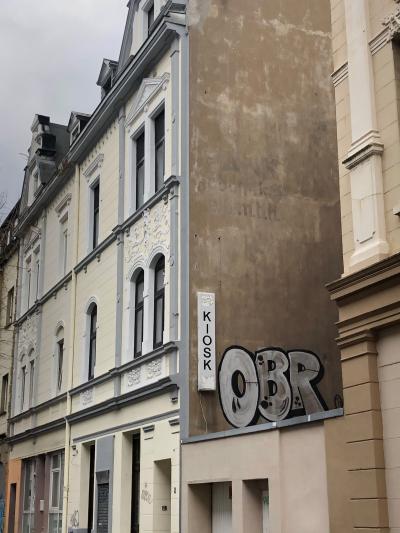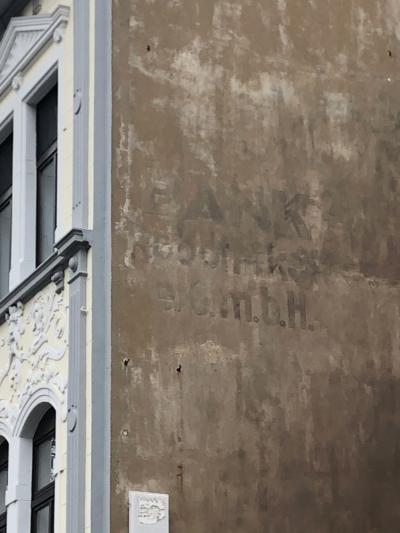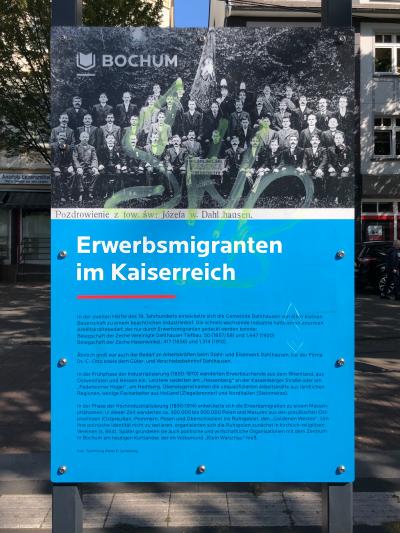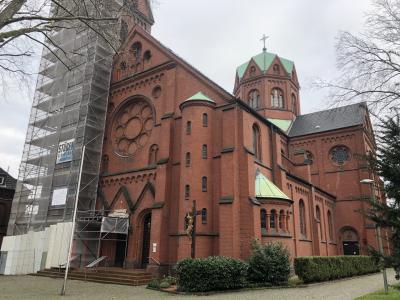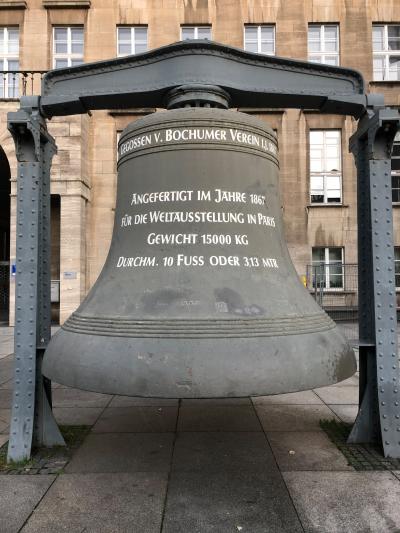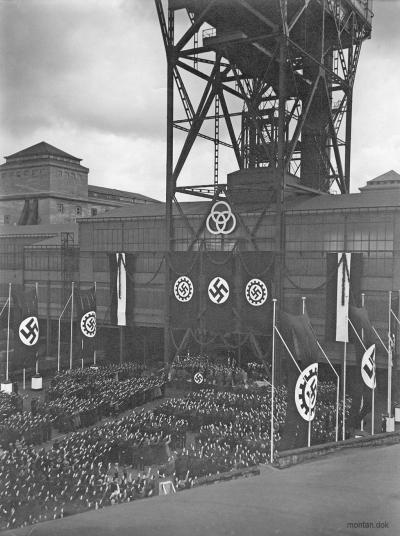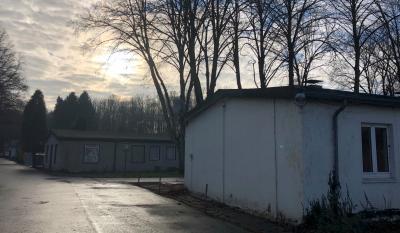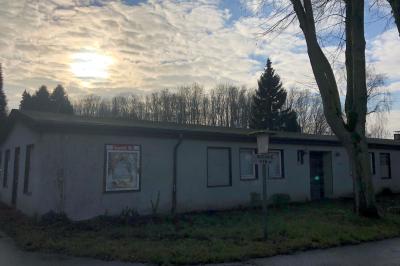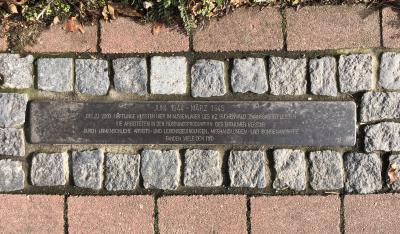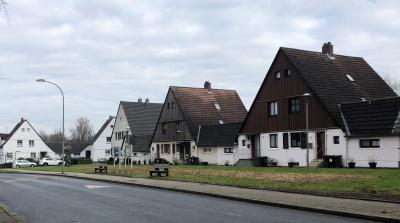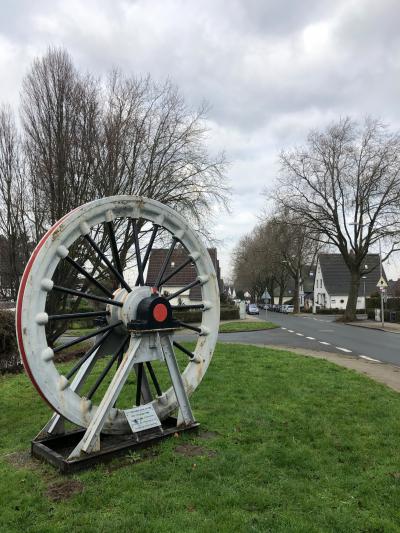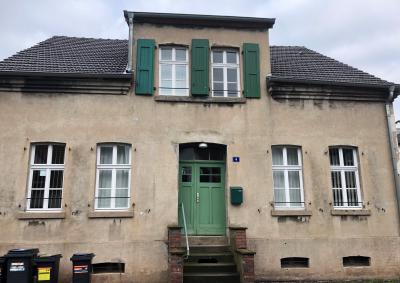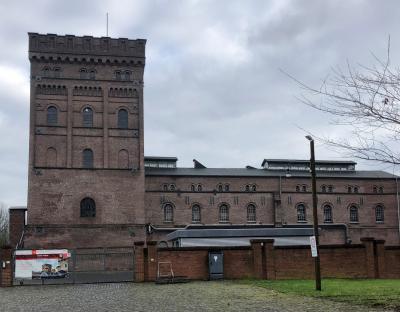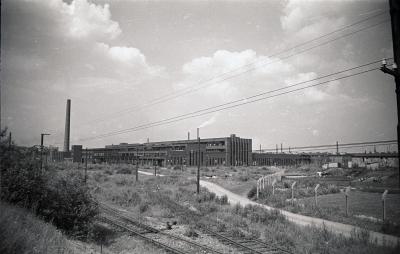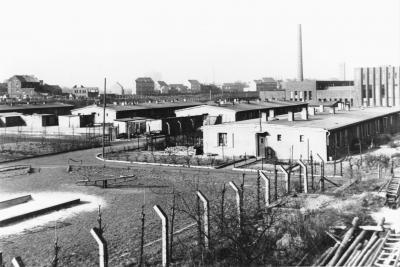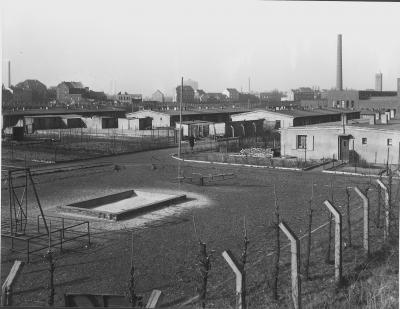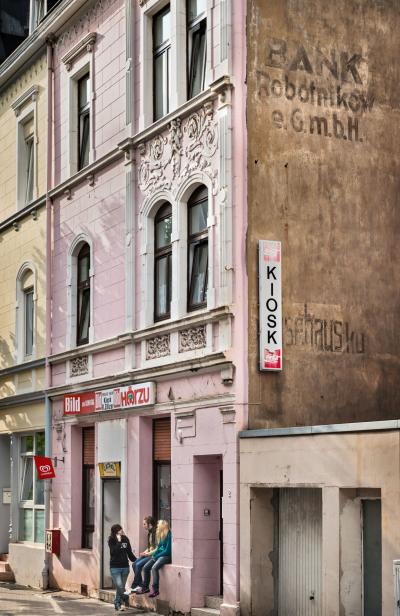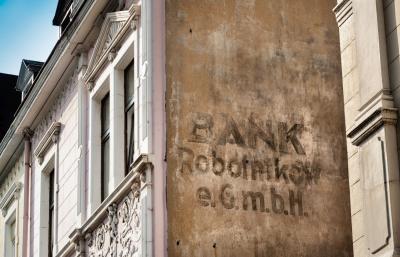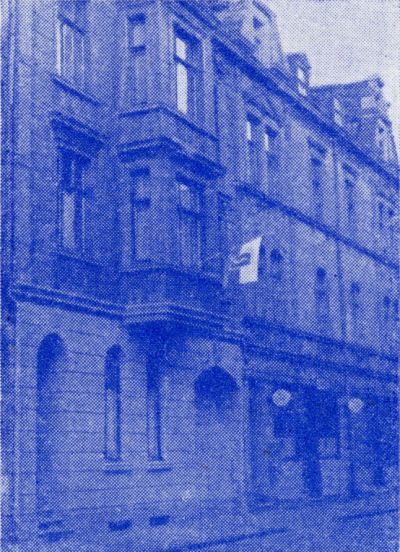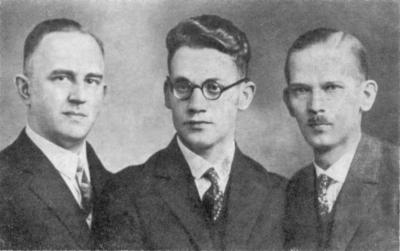About Polish miners, “Polish mines” and “Workers from the East” – A look back at 100 years of the history of Polish workers in Bochum (1871-1973)
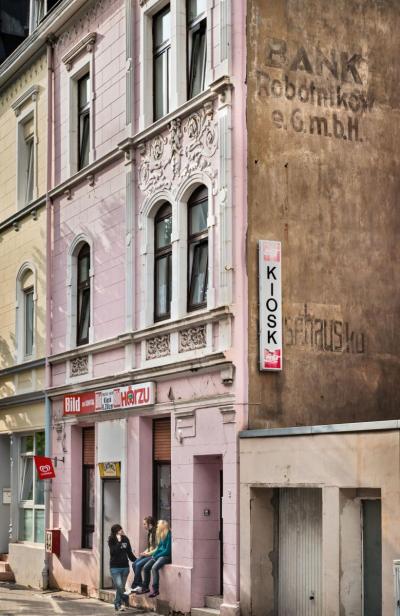
National Socialism and the Second World War
During the Second World War, the National Socialists’ war economy drew a large part of their workers from the foreign workforce, just like in the period between 1914 and 1918. Research today shows that during the course of the Second World War in the territory of the so-called Greater German Reich, around 13.5 million people were forced into labour for Nazi Germany, 2.8 million of whom were Poles.[22] The workers were assigned to forced labour in all areas of economic life, such as agriculture and forestry, mining, the (arms) industry, but also in trades or private households. The Ruhr area, with its rich coal reserves, was “(…) a central segment of the Nazi war economy”[23] (see Fig. 7).
In Bochum, it is thought that, during the course of the Second World War, there were over 30,000 forced labourers of different nationalities, including many Poles.[24] The forced labourers were housed in around 100 different, smaller and larger forced labour camps and barracks which were spread throughout the entire city area. Polish forced labourers were also housed in many of these camps. The Bergen camp, for example, which was set up in 1941 and 1942 for the civilian workers at the Constantin mine, is said to have accommodated around 600 people during the war, most of whom were conscripted Poles and Galicians (see Fig. 8 & 9).[25] Until 1943, forced labourers were mainly housed in wooden barracks, but bombing raids “(...)proved them inadequate as they were highly flammable“[26], as a result of which the Reich Ministry for Armament and Ammunition ordered them to be built from solid construction materials. In terms of numbers, the greatest deployment of forced labourers in Bochum was in the coal and steel companies of the Bochumer Verein which had been known as a “Nazi model company” since 1937[27] and was a linchpin of the war economy because it produced important war material for the Wehrmacht, Luftwaffe and the navy.[28]
Just like in the First World War, the Bochum Verein had to provide some of its male workers for military service when Poland was invaded on 1 September 1939. This meant that many jobs in the coal and steel industry remained vacant and, from 1940, were increasingly filled by foreign workers.[29] In June 1944, a subcamp of Buchenwald concentration camp was even set up at the Bochum Verein to take around 2,000 concentration camp prisoners and was overseen by the SS (See Fig. 10).[30] It was situated in the west of Bochum in Brüllstraße on the Bochum Verein factory site between Kohlenstraße and Alleestraße and so was in the direct proximity of armament and ammunition factories. The camp comprised 17 barracks and was fenced in with watchtowers and electric power lines. The concentration camp prisoners were mainly used as forced labour for the building and earthworks in the camp or in the nearby projectile factory, working in two 12-hour shifts. The factory mainly produced ammunition and, in the attached header shop, the concentration camp prisoners were put to work on the so-called monster presses on which smouldering iron blocks were processed. The prisoners were not given any protective clothing at all for the heavy work and often suffered severe burns as a result.[31]
[22] The foreign workers deployed in Nazi Germany during the Second World War can be broken down into the following three groups: Firstly, civilian workers. Secondly, prisoners of war, thirdly, prisoners from work education camps and concentration camps.
cf. Spoerer, Mark: Zwangsarbeit unter dem Hakenkreuz: ausländische Zivilarbeiter, Kriegsgefangene und Häftlinge im Deutschen Reich und im besetzten Europa 1939-1945, p. 9 ff., p. 90 ff.
[23] Seidel, Hans-Christoph: Der Ruhrbergbau im Zweiten Weltkrieg. Zechen – Bergarbeiter – Zwangsarbeiter, p. 21.
[24] cf. Grieger, Manfred: Zwangsarbeit in Bochum – Die Geschichte der ausländischen Arbeiter und KZ-Häftlinge 1939-1945, p. 4.
[25] cf. https://www.bochum.de/Denkmalschutz-/-Denkmalpflege/Denkmalliste-der-Stadt-Bochum/Siedlungen/Bergener-Strasse;
[26] Letter from the Ruhr Essen Regional Mining Industry Group to the Bochum Group dated 29 May 1943: Re: Barracks, in: Montanhistorisches Dokumentationszentrum (montan.dok) at the Deutsches Bergbau-Museum Bochum/Mining Archive (BBA) 40/487.
[27] On 1 May 1937, the Bochum Verein, as one of 30 operations and the only company from the coal and steel industry, was awarded the title “Nazi model company” by the so-called “Beauty of Labour” office which was overseen by the German Labour Front;
cf. Seebold, Gustav-Hermann: Ein Stahlkonzern im Dritten Reich. Der Bochumer Verein 1927-1945, p.255 f.
[28] In total, more than 10,000 people were forced into labour for the Bochum Verein and were spread over 15 camps belonging to the company. The forced labourers were involved in the production of various war materials, such as projectiles, grenades, artillery or various tank parts;
cf. Gleising, Günter: Bochums Stellung in der Rüstungs- und Kriegswirtschaft unter besonderer Berücksichtigung des Bochumer Vereins und dessen Zwangsarbeitereinsatz, p. 32 f., p. 35 f.
[29] cf. Seebold, Gustav-Hermann: Ein Stahlkonzern im Dritten Reich. Der Bochumer Verein 1927-1945, p. 159.
[30] The camp was in use from June 1944 until it was closed down in March 1945 as the allied troops approached Bochum. The Obersturmführer of the Waffen SS Hermann Großmann held the position of SS head of the subcamp in Bochum. At the end of the war, during a process targeting perpetrators from Buchenwald concentration camp, he was sentenced to death by the US military court and executed in Landsberg am Lech in 1948;
cf. Wölk, Ingrid: Das Außenlager des Konzentrationslagers Buchenwald beim ‘Bochumer Verein’, p. 50 f.
[31] cf. Wölk, Ingrid: Das Außenlager des Konzentrationslagers Buchenwald beim ‘Bochumer Verein’, p. 47.
